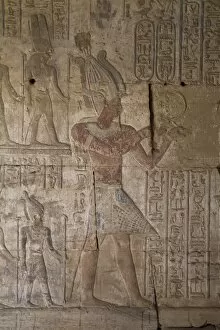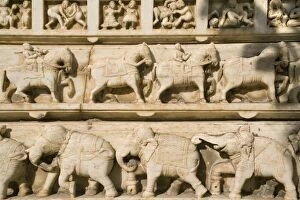Bas Reliefs Collection (#32)
Bas-reliefs are a fascinating form of art that have captivated audiences for centuries
For sale as Licensed Images
Choose your image, Select your licence and Download the media
Bas-reliefs are a fascinating form of art that have captivated audiences for centuries. These intricate sculptures, with their shallow depth and detailed carvings, tell stories and depict scenes from various cultures and time periods. One such example is the Saint Jerome and the Lion Bronze sculpture by Bartolomeo Bellano. Created in 1490, this masterpiece can be found in the Louvre Museum in Paris. It beautifully captures the moment when Saint Jerome tames a ferocious lion, symbolizing his ability to conquer his own inner demons. Another remarkable bas-relief is the Consular diptych of Boethius, an ivory relief dating back to 487. This exquisite piece showcases intricate detailing and depicts important figures from ancient Rome's political landscape. Moving forward in time, we encounter George Scott Winslow's work created by Edmonia Lewis in 1866. This bas-relief sculpture portrays Winslow as a heroic figure, paying homage to his accomplishments during the Civil War. Traveling to Italy, we find Emperor Nero immortalized in marble at Certosa di Pavia in Lombardy. This impressive bas-relief captures Nero's regal presence while showcasing the skillful craftsmanship of Italian artists. Venturing further east to India, we discover stunning bas-reliefs adorning temple complexes like those found at Humpi. These intricately carved stone panels depict mythological tales and religious narratives that continue to inspire awe among visitors. In England's countryside lies Cold Ashton Manor framed by an elaborate gate—a scene captured through a black-and-white photograph featured in The English Manor House publication. The image highlights how bas-reliefs can enhance architectural beauty even on smaller scales. Similarly captivating is L'Enfant Pleureur (The Weeping Child), a stone sculpture by Bouchardon located at Herstmonceaux Castle in East Sussex—an evocative piece showcased through another monochromatic photograph from The English Country House.






